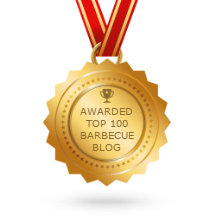Care and Feeding of your Dutch Oven
Another guest article from a Cooking-Outdoors reader!
By The Captain
When you purchase a new Dutch oven, or any cast iron product, you must first remove the protective coating. It is placed there after manufacture to protect from rust. The best way to remove this is with hot soapy water and a wire scrubber. I prefer to scrub it two or three times, rinsing after each time to feel if it is still there. After cleaning, rinse with hot water to clean off the soap.
 But what if you purchase a really rusty cast iron pot? You could scrub and scrub and scrub, but I prefer the handiest gadget in my kitchen – the self cleaning oven. Place the cast iron in the oven, place a drip pan on the bottom of the oven to catch the rust, turn on the cleaning cycle and “leave it and forget it.” I recommend this be done at bed time. (Less interruption in the family life) When it is cool it will still be really rusty, but the rust is now easier to remove. Just scrub as mentioned above.
But what if you purchase a really rusty cast iron pot? You could scrub and scrub and scrub, but I prefer the handiest gadget in my kitchen – the self cleaning oven. Place the cast iron in the oven, place a drip pan on the bottom of the oven to catch the rust, turn on the cleaning cycle and “leave it and forget it.” I recommend this be done at bed time. (Less interruption in the family life) When it is cool it will still be really rusty, but the rust is now easier to remove. Just scrub as mentioned above.
Next, the oven needs to be dried till there is no moisture left on the iron. The easiest way to dry a Dutch oven is to put in a warm (160ish) kitchen oven for 30 minutes or so, then let it cool enough to handle it. Remember, iron gets hot, cast iron retains the heat. The use of an oven mitt is a good thing.
Now you are ready to begin the seasoning process. I prefer vegetable oil, not lard or white shortening. It does not matter, the technique is similar. However, the use of oil does tend to make the iron a little sticky at first. Using a paper towel, apply the shorting or oil to the inside and outside of the oven, until coated. If using lard or shortening put extra in the pot. Do the same for the lid.
Put both in a 350 degree (some prefer 450 for one hour, if using lard /shortening) kitchen oven for two hours. Remember, the drip pan? Well rinse it out and put it back in the oven. If you are using oil turn the pot upside down and coat everything again at one hour and leave for one more hour. If you are using lard/shortening, swish the excess seasoning inside the oven periodically. Remember the oven mitt.
When done, allow to cool and wipe the entire inside surface down again with oil just to leave a thin coating on the oven.
Now you are ready to start cooking.
It is best to begin with foods which require a lot of oil such as deep fried foods, bacon, or bread as they tend to continue to coat the oven. After each use wash ONLY in very hot water to clean. If you cooked bread in it, wipe a light coating of seasoning on and you are good to go again. It does not require washing out. If you cooked something which stuck to the oven, put some water in the oven and put it back on the heat source. Heat until boiling. Let cool and use a plastic scrubber to remove the burned on food. Dump out the water, rinse with ONLY hot water at least twice, wipe out with a paper towel and then apply a light coat of seasoning to the oven and you are ready to go again.
If you are going to store your oven, place a paper towel inside the oven to help absorb any moisture. Almost any seasoning will become rancid if you leave it for a long time. If you are going to store your oven or not use it for a long time, simply store it without the lid and apply a light coat of mineral oil and it will not become rancid. Store in a location where it is protected from moisture and dust.
 If the oven gets rusty after it has been seasoned, you can also clean it by soaking the rusty area in Coca Cola for an hour (Hmmm, wonder what it does to the stomach). Then scrub with a wire scrubber only where it is rusty. Then, rinse it out and preseason that part of the oven again by applying a coat of seasoning and heat to 425 degrees for 30 minutes.
If the oven gets rusty after it has been seasoned, you can also clean it by soaking the rusty area in Coca Cola for an hour (Hmmm, wonder what it does to the stomach). Then scrub with a wire scrubber only where it is rusty. Then, rinse it out and preseason that part of the oven again by applying a coat of seasoning and heat to 425 degrees for 30 minutes.
There are times when, during the process of seasoning it, too much seasoning is applied and a build up occurs and, after a while, it will begin to flake off. The only remedy here is to clean off the flaking material and start over again, or just continue to cook in it as it is.
A well seasoned iron pot is a prized possession and will last a lifetime. It can be passed on to your family as an heirloom which will function as long as it is taken care of properly. Enjoy every minute of your time while cooking in these wonderful ovens. They provide so much wonderful food and wonderful times when they are properly cared for. This requires only a minimal amount of care after each use. The biggest sin in using an iron pot is to use it and then NOT CLEAN it for days or even weeks. There are actually people who do that, requiring the oven to be seasoned again.
One more note:
Be careful with high acidic foods as they will eat away at the seasoning on the oven.

